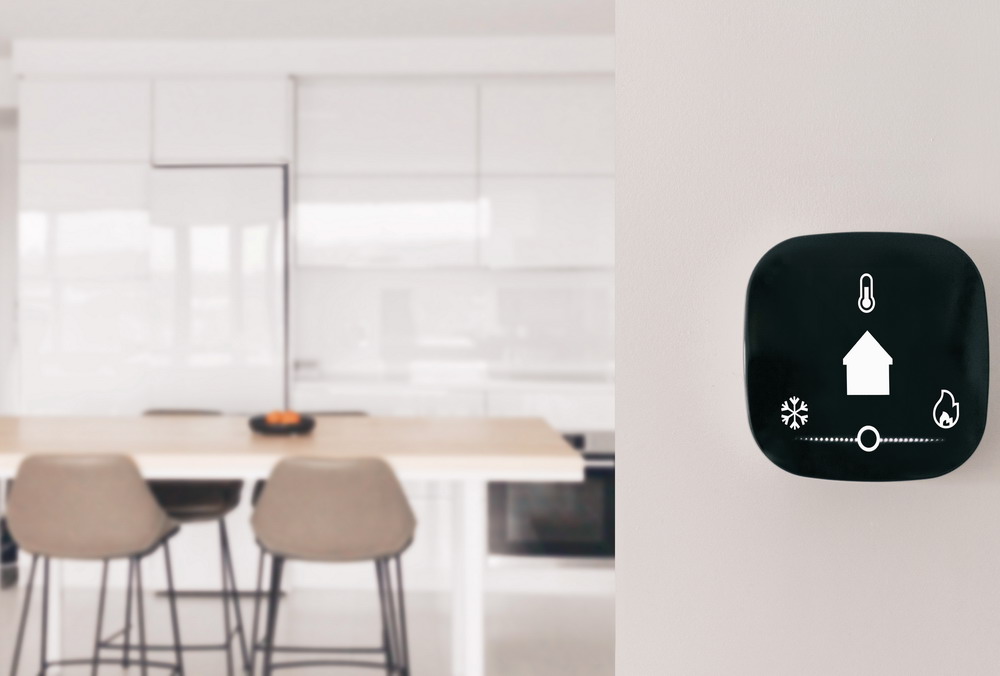What does it take to turn a home into a smart home these days? A lot of technology. Right now there are a ton of players all competing in what could be best described as a fractured market. This is good in the sense that it gives consumers plenty of options. It is bad in the sense that so many players all doing things differently can make it challenging to create a fully comprehensive home automation system in which every component plays nicely with all the others.
Another downside to the currently fractured market is that there is no one company, or group of companies, strong enough to set standards. Vivint is a Salt Lake City company considered one of the pioneers of home automation. Their goal is to address the standards issue by becoming the Apple of smart homes. Whether or not they succeed remains to be seen. But know this: the company that manages to accomplish it first will dominate smart homes.

Apple and the Smartphone
What we now know as the smartphone did not exist until 2007. Prior to that, mobile phones were just that: mobile devices on which you could make phone calls and receive text messages. But even text messaging was limited in those days. So what changed? Apple changed.
Following a successful PC war against Microsoft and Windows, Apple decided to go after the mobile phone market. They introduced the very first iPhone at MacWorld 2007. Their product was revolutionary. Since that time, iPhones have been the standard by which all other smartphones are judged.
Even though Android phones now command a much larger segment of the mobile phone market, iPhone continues to be the dominant brand. Moreover, iPhones enjoy an intensely loyal following. There are customers who will buy every new iPhone that comes on the market whether they need it or not. They will wait in line for days to do so.
So what did Apple do that was so revolutionary? They created a device that adheres to strict standards and works out-of-the-box. Those two characteristics have allowed Apple to maintain handset dominance. Those same two characteristics are what home automation is currently lacking.
Devices Don’t Play Well Together
Smart home technology’s biggest problem right now is compatibility. You might have a smart thermostat from one manufacturer, a video doorbell from another, and electronic door locks from the third. Because they do not play well together, you cannot control them all from a single hub. Now you need three separate mobile apps to operate them.
Likewise, you might have a hub with compatible devices for lighting, your thermostat, and even your window shades. But the hub does not work with your voice assistant or your door locks. Again, you need to have separate systems.
This creates several problems. First, it makes it exceedingly difficult to create your own comprehensive smart home system piecemeal. Any attempt to do so will leave you with plenty of hours spent trying to get all of your devices to talk to one another. You may get them working separately, but you need them to talk to one another to truly maximize the potential of having a smart home.
The other problem it creates is one of cost. If you are not willing to build a system piecemeal, you will have to buy a pre-configured system that includes everything you want. The more you want, the more it is going to cost. Even then, the chances of you finding a system with everything is pretty slim. You will probably still find yourself adding extra pieces later on.
A Race to the Top
Right now it appears to be an all-out race to the top of smart home market. The company that figures out how Apple did it with smartphones and replicates their success will eventually go on to dominate the smart home market. Unfortunately, it could be a while.
Smart home equipment manufacturers are still sold on the idea of proprietary hardware and software. They believe there is enough room for everyone, so there is no need to come to any agreement on standards. A fractured market will be the norm until that mindset changes.
 2018 ·
2018 ·